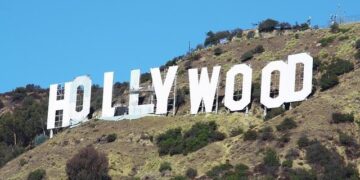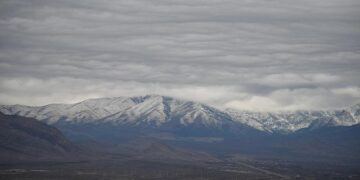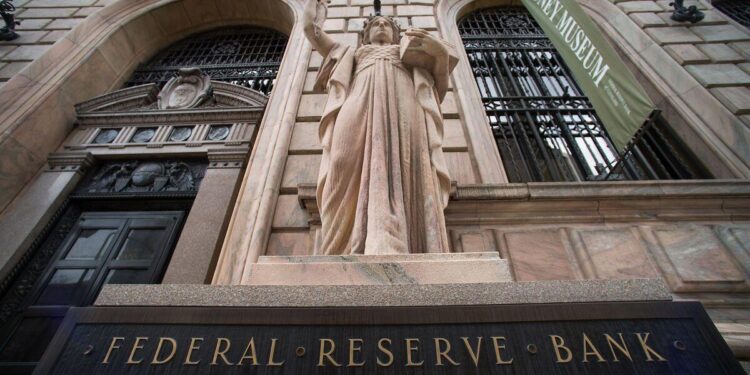In an exclusive report, Axios delves into the insights of a Cleveland Federal Reserve official who has outlined three distinct scenarios for the U.S. economy facing challenges from escalating tariffs. As trade tensions persist and policymakers grapple with the implications of protectionist measures, understanding these potential economic landscapes becomes crucial for businesses, consumers, and investors alike. The scenarios presented shed light on varying outcomes based on different tariff levels and economic responses, providing a comprehensive framework for forecasting the trajectory of the U.S. economy in an increasingly complex global market. This analysis not only highlights the inherent uncertainties of trade policy but also underscores the critical need for strategic planning in response to an evolving economic environment.
Cleveland Feds Tariff Impact Analysis Reveals Three Economic Scenarios
The Cleveland Federal Reserve’s recent analysis has outlined three distinct economic scenarios stemming from the impacts of tariffs. Each scenario presents a varying outlook on how these trade policies could reshape the economy in both the short and long term. Scenario One suggests a moderate increase in consumer prices, directly linked to higher import costs, which could lead to reduced consumer spending and ultimately slow down economic growth. In contrast, Scenario Two predicts a more severe recession, driven by retaliation from other nations that could disrupt supply chains and deepen the negative economic impact.
| Scenario | Description | Expected Outcome |
|---|---|---|
| Scenario One | Moderate price increases due to tariffs | Slower economic growth |
| Scenario Two | Severe recession with retaliation measures | Deepened economic downturn |
| Scenario Three | Rapid adjustment in supply chains | Long-term economic resilience |
Scenario Three offers a more optimistic viewpoint, positing that businesses may swiftly adapt to new trade environments by diversifying supply chains and investing in domestic production. This scenario emphasizes resilience, suggesting that while the initial impact of tariffs may be challenging, the economy could stabilize and even thrive in the long run. This analysis underscores the complexities of tariff policies and their potentially far-reaching implications across different economic sectors and consumer behaviors.
Key Insights from Fed Official on Navigating Tariff Challenges Ahead
In a recent discussion, a Cleveland Federal Reserve official outlined three potential scenarios that the economy could face in light of ongoing tariff challenges. According to the official, the economic landscape is defined by uncertainty, necessitating adaptive strategies from businesses and policymakers alike. Scenario analysis reveals the following possibilities:
- Scenario One: Increased Consumer Prices – Tariffs could lead to substantial price hikes, reducing consumer spending power.
- Scenario Two: Supply Chain Disruptions – Businesses could experience delays and increased costs due to shifts in sourcing.
- Scenario Three: Trade Partnerships – The U.S. may seek to bolster relationships with non-tariff countries to mitigate economic damage.
The Fed official emphasized the importance of proactive measures to navigate these challenges. Businesses must reconsider their sourcing strategies and look for opportunities to diversify supply chains. The official also pointed out that policies aimed at increasing domestic production could play a pivotal role in stabilizing the economy as companies adapt to fluctuating tariff regimes. Table 1 summarizes potential adaptation strategies for businesses facing these tariff challenges:
| Strategy | Description |
|---|---|
| Cost Structure Review | Analyzing internal costs to mitigate price increases. |
| Alternative Suppliers | Identifying suppliers outside tariff-affected areas. |
| Strategic Pricing | Adjusting pricing strategies to absorb tariff costs. |
Strategic Recommendations for Businesses Amid Ongoing Trade Uncertainties
In the face of persistent trade uncertainties, businesses must adapt their strategies to mitigate risks and capitalize on emerging opportunities. Companies should consider diversifying their supply chains to avoid over-reliance on any single market or supplier. This approach can help reduce vulnerability to tariffs and trade disruptions. Key actions include:
- Exploring Alternative Markets: Identify new regions for sourcing materials or selling products, which can cushion against domestic trade issues.
- Increasing Inventory Levels: To pre-empt supply chain interruptions, companies may need to hold higher stock levels or forge stronger relationships with multiple suppliers.
- Investing in Technology: Utilize data analytics and real-time tracking systems to enhance visibility and responsiveness across supply chains.
Additional strategies may involve adjusting pricing models to reflect changes in tariff duties while remaining competitive. Understanding the evolving landscape of trade policies should guide companies in making informed pricing and investment decisions. Businesses could assess options such as:
| Strategy | Description |
|---|---|
| Tariff Engineering | Redesign products to minimize tariff exposure while maintaining quality. |
| Frequent Market Analysis | Continually assess market conditions to adapt pricing and sourcing strategies dynamically. |
| Consumer Engagement | Enhance communication with customers about pricing changes and value propositions to maintain brand loyalty. |
In Conclusion
the insights provided by the Cleveland Fed official illuminate the complex landscape facing the U.S. economy as tariffs continue to reshape trade dynamics. The three scenarios presented offer a nuanced understanding of how businesses and consumers may navigate this turbulent environment, underscoring the importance of strategic planning and adaptability. As policymakers weigh their responses, the implications of these scenarios will be crucial for economic stability and growth in the months ahead. Stakeholders across the board will need to remain vigilant, monitoring developments and preparing for the various potential outcomes laid out by the Federal Reserve. As we move forward, the intersection of policy and economic reality will undeniably shape the future of the American economy.















![[News] Japan Develops 10nm Nanoimprint Technology, with Potential to Tackle EUV Bottleneck – TrendForce](https://earth-news.info/wp-content/uploads/2025/12/329851-news-japan-develops-10nm-nanoimprint-technology-with-potential-to-tackle-euv-bottleneck-trendforce-360x180.jpg)















